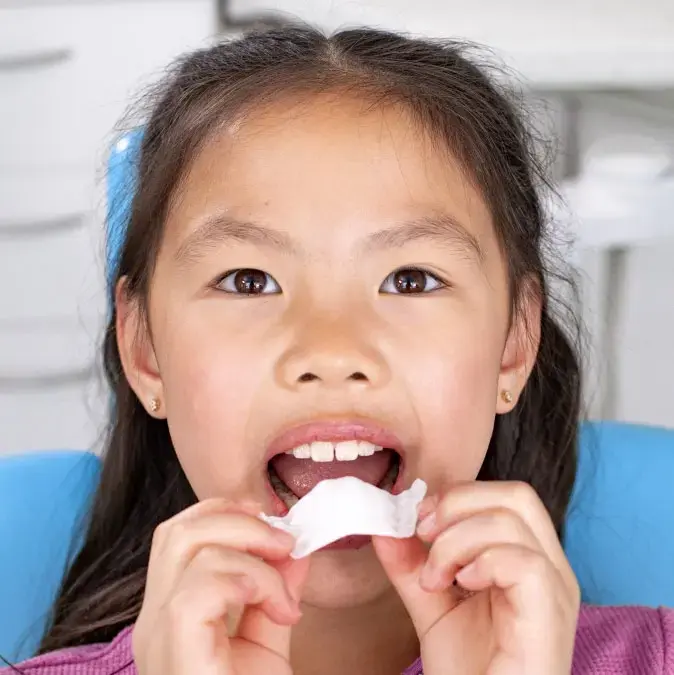
Early orthodontic care can play a big role in shaping a child’s smile and overall oral health. One option that’s gaining popularity among parents and orthodontists is Invisalign. While many associate Invisalign with teens and adults, it’s also an option for younger children. Known as Invisalign First, this treatment is specifically designed to address early orthodontic needs during a child’s development.
Understanding the Early Phase of Orthodontics
Most orthodontic treatments start after permanent teeth have fully erupted. However, there’s a phase before that—known as Phase 1 treatment—that targets early developmental issues. This stage usually occurs between the ages of six and ten. The goal is to catch potential problems before they become more serious.
Invisalign First was created with this purpose in mind. It uses clear aligners to gently guide growing teeth into better positions and can help shape the dental arches and jaw before more advanced issues occur. It’s not just about straightening teeth—it’s about setting a solid foundation for the future.
How Invisalign Works in a Growing Mouth
Invisalign aligners are made from smooth, clear plastic and are custom-designed to fit snugly over your child’s teeth. Every one to two weeks, your child switches to a new set of aligners. Each set moves the teeth slightly, gradually shifting them into the desired position. This steady movement works with the natural development of the mouth, helping correct spacing, crowding, and bite issues.
For younger children, this method can help open space for incoming permanent teeth. It can also assist in developing the jaw in a way that reduces the chance of extractions or more invasive treatment later on. Since these aligners are removable, kids can still eat, brush, and floss as they normally would—something that isn’t always easy with metal braces.
Benefits of Invisalign for Children
One of the biggest benefits of Invisalign for kids is comfort. Unlike braces, there are no metal brackets or wires to cause irritation. This makes the experience more pleasant, which can help children stay consistent with wearing their aligners.
Another advantage is hygiene. Because the aligners are removable, brushing and flossing are much easier. This helps reduce the risk of cavities and gum issues during treatment.
Invisalign aligners are also less noticeable than traditional braces. While appearance may not be a major concern for younger children, some kids do feel more confident when their treatment is discreet.
Parents also appreciate that Invisalign First can address a wide range of early orthodontic problems, including:
- Narrow dental arches
- Crossbites
- Crowded or gapped teeth
- Underdeveloped jaw structure
Treating these issues early can prevent longer, more complex treatment later in life.
Things to Consider Before Starting
As with any medical decision, there are a few things to think about before choosing Invisalign for your child. One key factor is responsibility. Aligners must be worn for 20 to 22 hours a day to be effective. If your child tends to lose things or has trouble following routines, they might need help keeping track of their aligners.
You’ll also need to make sure they remove the aligners when eating or drinking anything besides water. This prevents staining and damage to the trays.
Some children may still need traditional braces or other appliances depending on the severity of their bite or alignment issues. Your orthodontist will evaluate your child’s mouth and determine if Invisalign First is the right option. Not all kids are candidates, but those who are can benefit from a gentle, modern treatment approach.
Monitoring Progress and Staying on Track
Regular check-ins are still important with Invisalign. Your child will need to visit the orthodontist every few weeks to ensure their teeth are moving properly. These visits are usually quick and don’t involve wire adjustments like braces do.
Technology also plays a big role in tracking progress. Many orthodontists use digital scans and treatment planning tools to create a series of aligners and predict how the teeth will move over time. This gives you a clear picture of what to expect from the start.
Parents should also keep an eye on their child’s compliance. Lost or damaged aligners can delay treatment, so it’s helpful to have a routine and possibly a backup set on hand. Some practices even offer tools or apps to help you and your child stay on schedule.
Why Early Guidance Matters
Treating orthodontic problems early doesn’t just improve how a smile looks. It can also influence speech, chewing ability, facial symmetry, and even breathing. Guiding jaw growth can reduce the risk of impacted teeth and improve how the upper and lower jaws fit together.
Using Invisalign in this early phase helps shape the way your child’s teeth and jaws grow, laying the groundwork for a healthy adult smile. The aligners provide gentle pressure where needed, and the ability to customize treatment makes it easier to address unique dental issues.
Conclusion
Choosing Invisalign First for your child’s early orthodontic treatment is a decision worth exploring. It offers a combination of comfort, flexibility, and effectiveness that can make the experience more manageable for both children and parents.
While not every child will be a candidate, many will benefit from its ability to guide tooth and jaw growth during crucial developmental years. If you’re considering orthodontic care for your child, talk to a trusted orthodontist about whether Invisalign could be the right fit. Early action can make a big difference—and a straighter, healthier smile might be easier to achieve than you think.